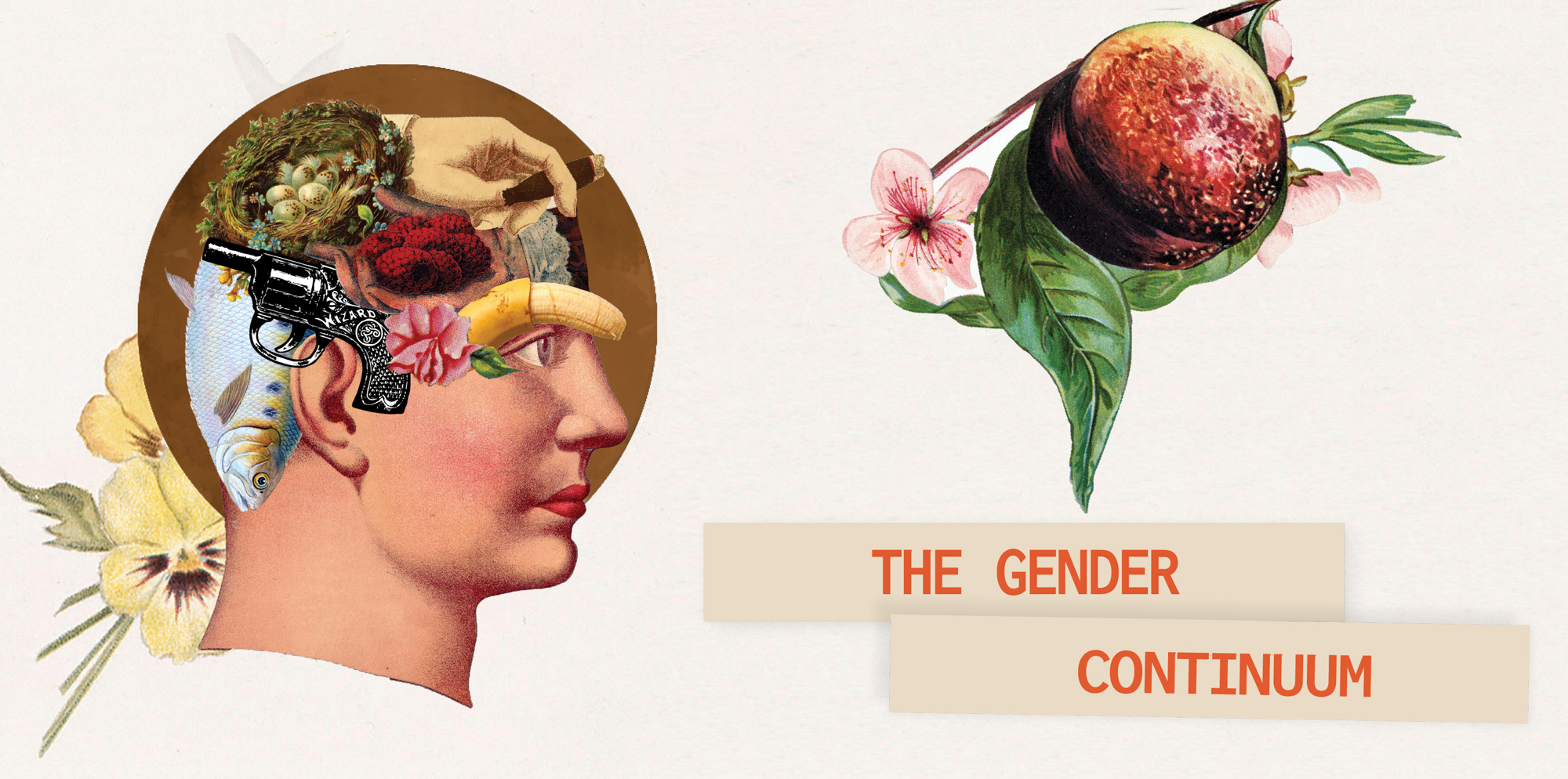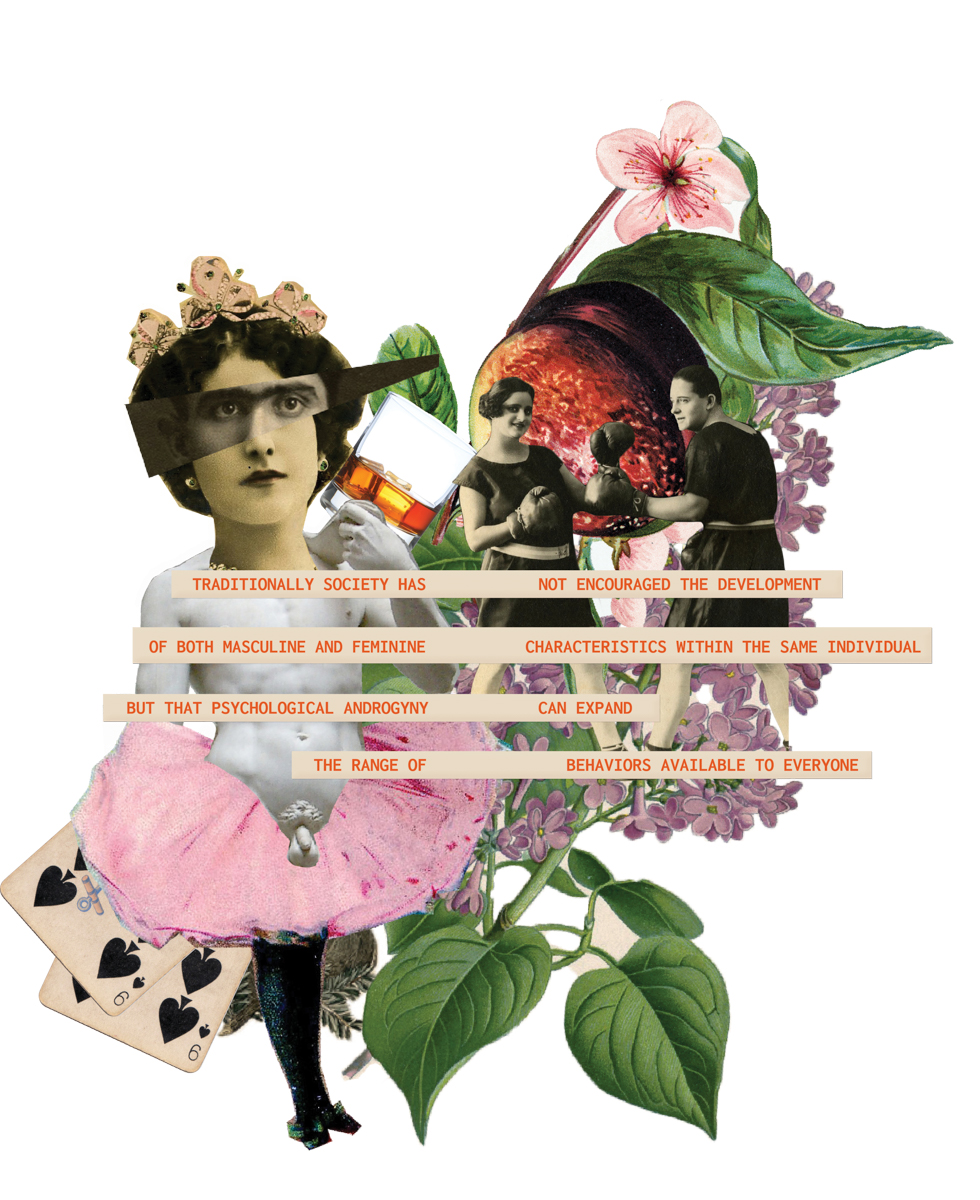THE GENDER CONTINUUM

This genderless future has been brewing below the surface for decades. The current generation is not the first to call into question the outdated systems of their predecessors. Gender is a defining structure in our society, and breaking gender roles and blurring the lines between masculine and feminine is the ultimate social rebellion. A number of anti establishment groups, from feminism to punk rock, have embraced gender expression as a way to “rebuild the machine.”¹ The history of androgyny and gender issues is deep and complex. It calls into question individuals’ identities and how they fit into society. Exploring this history can help put our current approach to gender in perspective.
The 1970s were an important decade for laying the foundation of our contemporary discussion about gender fluidity. During this decade, people were about gender fluidity. This generation was very concerned with redefining gender stereotypes. Some of the first in depth scientific gender studies were conducted during this time, and new scientificresearch showed that gender roles were in fact learned. Toys and clothes for children leaned gender neutral. Television shows and movies took this a step further by showing boys playing with dolls and girls working on cars.³

Another psychologist Jodi Weinstein found that, “in being androgynous, especially in a sex-stereotyped society, a person would need to be open to experience, flexible, accepting of apparent opposites, unconcerned about social norms, and self-reliant — exactly those traits identified with creative persons.”⁴ This psychological element could explain why so many of our culture’s icons across the decades have explored androgyny.
Icons such as Grace Jones and Prince kept this tradition alive in the 1980s. However, just as the women of the 60s rebelled against the gender stereotypes of the 50s, the people of the 80s reacted to the aggressive non-gendering of the 70s. This decade bounced back to clearly gendered clothing, and resulted into the Princess Industrial Complex.⁵ The 1990s began to correct this through grunge culture, with icons such as Kurt Cobain donning eyeliner and floral print dresses.
Third wave feminism sought to question, reclaim, and redefine ideas about gender, sexuality, femininity, and masculinity. There was a decided shift in perceptions of binary gender, leading to the concept of a gender continuum.
From this perspective, each person is seen as possessing, expressing, and suppressing the full range of “masculine” and “feminine” traits. A major goal of this process is first becoming conscious of the ways one’s gender identity and sexuality have been shaped by society and then intentionally constructing (and becoming free to express) one’s authentic gender identity.⁶ This way of thinking is becoming the new normal in contemporary society. This ebb and flow throughout history has resulted in a more malleable gender construct. However, with Donald Trump in the White House, and our current country’s divide between new and old ways of thinking, are we in danger of reverting back to the gender stereotypes of the 50s and 80s? What makes our current conversation different? How can we ensure that the future of gender is fluid, a true continuum in which each and every unique gender expression (or lack thereof) is accepted?
Change is scary and we’re already seeing these growing pains manifest themselves in fights about bathroom usage and attacks on transgender individuals. People feel threatened by change, especially when they are unsure of where they fit into this new society. Not being able to place people in these neat, little boxes is uncomfortable. Pushing past the discomfort and seeking understanding of a different culture is the best way to develop as a human. Ask, just as my friend did, how people identify themselves. If we as humans are open to truly understand and accept people’s preferred gender expression, the future could truly be non-binary.